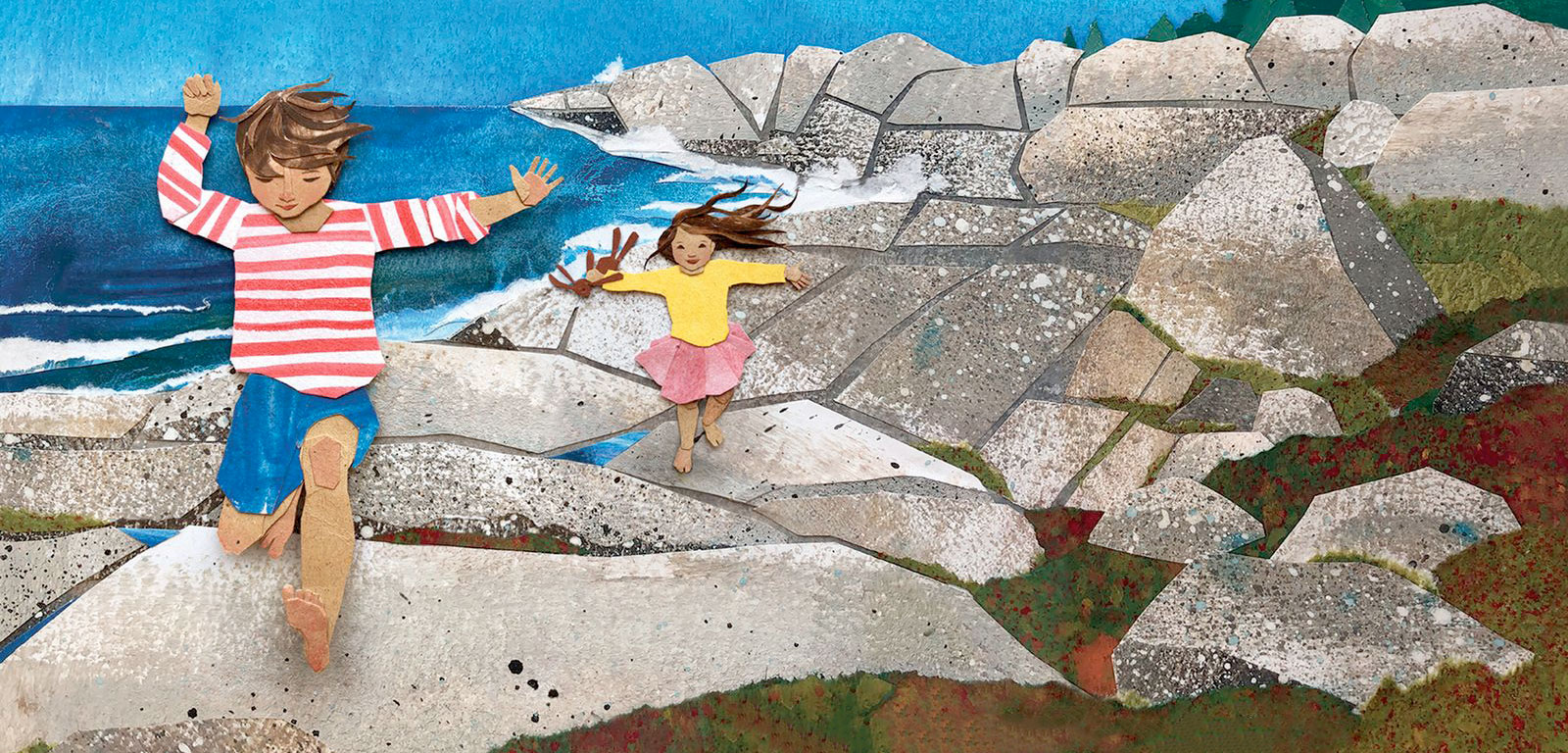New Reads for Coastal Kids Are Packed with Fun and Facts
These 10 coastal-themed books deliver more than pretty pictures.
Article body copy
This batch of children’s books about the coast and ocean illustrate how far picture books have come. The authors and illustrators of these fiction and nonfiction books know how to tell a story well. But each book also provides a launch pad for critical thinking—for science classes, creative writing exercises, political and environmental discussions, and art projects, too. Almost every one of these books includes extensive endnotes with added content such as positive actions that a person can take to, say, help whales or the rainforest or coral reefs; glossaries and ideas for where to find more information; or the real story behind the one portrayed in the book. These books are not just an entertaining and informative way for a child to pass some time alone or with an adult, they’re also books to keep on the shelf and dip into for information when you have a question about why whales leap or what causes coral bleaching, and to return to again and again.
 Great Carrier Reef
Great Carrier Reef
Text by Jessica Stremer
Illustrated by Gordy Wright
40 pp. Holiday House
The USS Oriskany’s life as an aircraft carrier is over, but the steel behemoth is embarking on a new mission as the world’s largest artificial reef. In Great Carrier Reef, readers learn how sinking the so-called Mighty O will provide habitat for invertebrates and fish in Florida, where coral reefs are in trouble, and they’re taken step by step through the decommissioning process, from draining the oil to reclaiming the copper to scrubbing off the toxic paint. By the time it’s ready to sink, the “Mighty O is nothing more than a shell of its former self.” The text is concise yet informative and explains the ingenuity required to sink a vessel safely. The full-spread illustrations rendered in gouache and acrylic are most stunning when depicting underwater scenes but also do a great job of showing the massive size of the ship—with humans included for scale—and provide lots of details for the child who pores over illustrations. Endnotes round out this title with details on natural reefs, the USS Oriskany, the vessel’s sinking, and sources for more information.
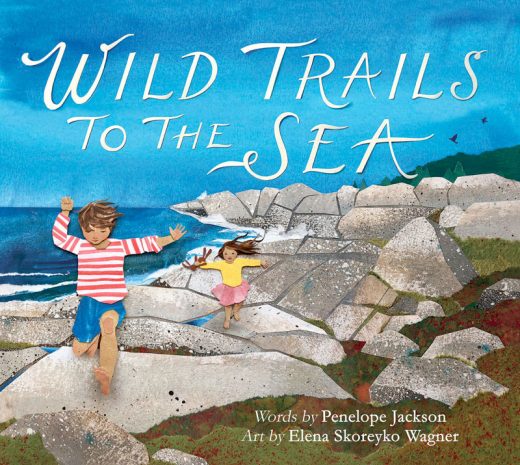 Wild Trails to the Sea
Wild Trails to the Sea
Text by Penelope Jackson
Illustrations by Elena Skoreyko Wagner
32 pp. Nimbus Publishing
In Wild Trails to the Sea, a nature-loving adult narrates their hopes for a child: “I hope you see the goldfinches swoop and trace their hunting paths to treasure,” for instance, or “I hope you leap into the freezing waves and ride them onto shore.” Set in coastal Nova Scotia—the creators include a list of the actual places depicted—the text and illustrations show a variety of adults and children exploring coastal locales throughout the seasons. The text is often evocative and whimsical, an approach that could be lost on young readers. But together with the images, which are rendered in layered paper collage, it illuminates the breadth and wonder of the natural world. Everyone can imagine a snowflake landing on their nose, the rush of a salty wind, or the thrill of skipping a stone.
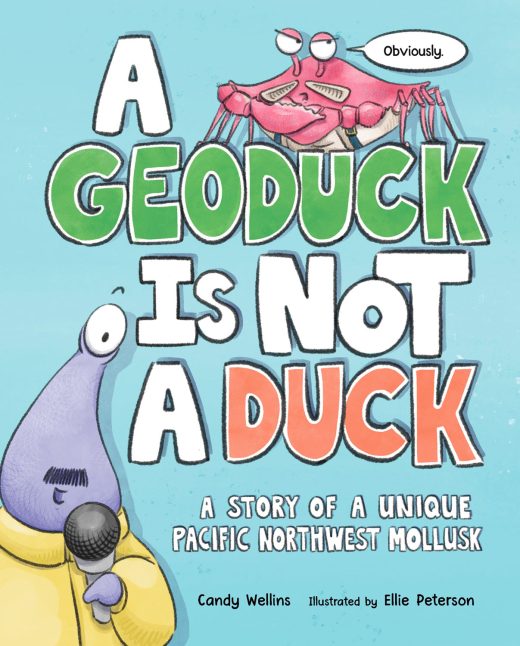 A Geoduck Is Not a Duck
A Geoduck Is Not a Duck
Text by Candy Wellins
Illustrations by Ellie Peterson
32 pp. Sasquatch Books
There’s a mystery afoot somewhere in the Pacific Northwest: a “gooey duck” has gone missing. The story hops between a newscaster in the Continuing Ocean News studio and “the star reporter” Sea Star—complete with a cyclops eye and a bad mustache—who’s at the scene. Of course, the joke’s on the reporter as the missing creature is neither gooey nor a duck; it’s a Pacific geoduck, the largest species of burrowing clam. (For those unfamiliar with this clam, a note at the beginning of the book provides the pronunciation—“goo-eey-duhk”—which helps explain the confusion.) A Geoduck Is Not a Duck is a silly romp reminiscent of the Amelia Bedelia book series in which things are taken a bit too literally. “Who is responsible for the gooeyness?” the newscaster asks. “And who will clean the duck?” Eventually, with the help of a crab and an otter, Sea Star learns more about the geoduck and manages to locate it … right before it goes missing again. The endnote provides a photograph of a geoduck and explains its biology and the derivation of the name, which is the Nisqually Indian Tribe’s word for “dig deep.”
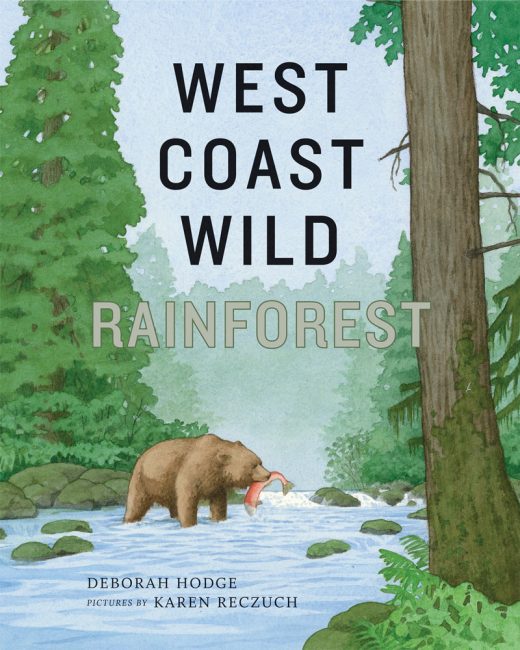 West Coast Wild Rainforest
West Coast Wild Rainforest
Text by Deborah Hodge
Illustrations by Karen Reczuch
44 pp. Groundwood Books
In West Coast Wild Rainforest, readers meet salmon and bears, squirrels and wolves, owls and deer, and other creatures that make the coastal temperate rainforest of the Pacific Coast home. The vibrant full-page-spread illustrations render animals and plants beautifully but also capture the nuance of this habitat—raindrops on devil’s club, sunlight cutting through fog, the wings of an insect in a chickadee’s bill. The author skillfully shows the connections in the coastal forest ecosystem. Trees of all ages shade streams and hold soil in place; dying salmon feed myriad animals such as wolves, eagles, and insects; decaying fish and animal scat fertilize the forest; and banana slugs, sometimes as long as actual bananas, recycle decaying plants. Young readers will enjoy seeing wildlife in its wild habitat, but the book is also the perfect resource for science discussions on the biotic and abiotic parts of habitats, nutrient cycling, keystone species, and interconnections between living things.*
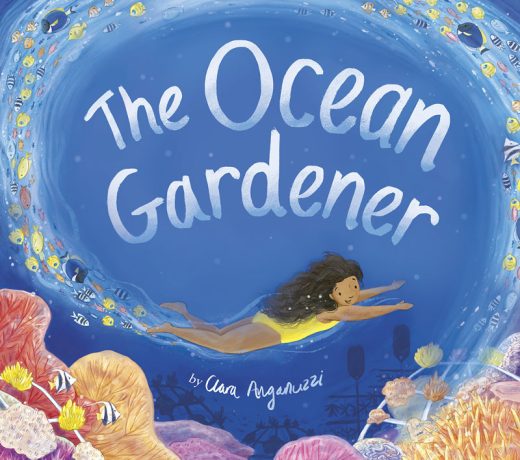 The Ocean Gardener
The Ocean Gardener
Text and illustrations by Clara Anganuzzi
32 pp. Tiger Tales
Ayla and her mother live on an unnamed tropical island that is “just a speck in the middle of the sea,” but to Ayla is the “whole world.” Ayla’s mother is a marine biologist, and while the first few spreads of The Ocean Gardener show the pair exploring the natural beauty of the ocean and its inhabitants, we soon learn that the coral reef is dying. This is distressing to Ayla, who doesn’t want the fish to go. “Stop! Stay here! Please don’t leave,” she pleads. Thankfully, her mother, the ocean gardener, has a plan. They collect tiny pieces of live coral that have broken off the reef, grow them in tanks in a lab, and then plant them on artificial reef structures. The book is based on the experiences of a marine biologist working on a coral reef restoration project in Seychelles. A description of the project—with photographs—is included, along with more details on corals, coral reefs, and coral reef bleaching.
 Something About the Sky
Something About the Sky
Text by Rachel Carson
Illustrations by Nikki McClure
56 pp. Candlewick Studio
Years before biologist and writer Rachel Carson wrote Silent Spring, The Sea Around Us, and her other insightful books on the natural world, she was approached by the television program Omnibus “to write something about the sky.” Her script, “Something About the Sky,” aired March 11, 1956, and is brought to life visually by paper-cut artist Nikki McClure in a book of the same name. Something About the Sky is about the sky and clouds, of course, but it is also about the sea. “Our world has two oceans,” Carson writes, “an ocean of water and an ocean of air.” She encourages readers to imagine how we “live on the floor of an ocean—the vast atmospheric sea that surrounds our planet” where “close to the Earth in the zone of living things, clouds are born and die.” This is a science book rich with language: fair-weather clouds are fleecy and promise sunny skies, storm clouds portend rain or snow, and the “ribbed pattern of high clouds” marks the crests of giant atmospheric waves. It is also a study of the ways in which writers creatively describe the natural world and the choices illustrators make to represent it. Using ink on absorbent washi paper, McClure creates the perfect soft and watery backgrounds of sky and sea that contrast with the sharp lines of black paper cuts.
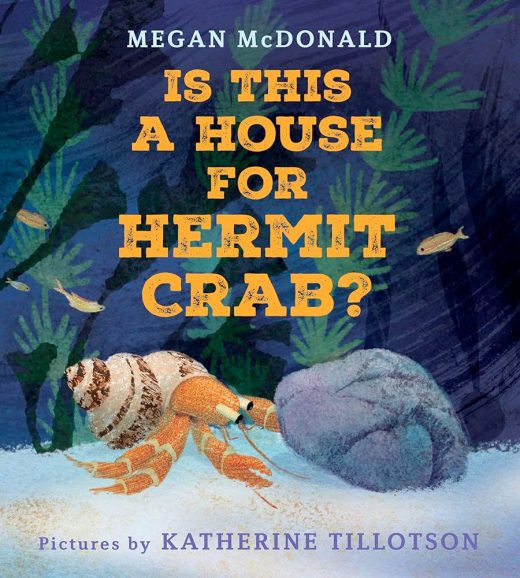 Is This a House for Hermit Crab?
Is This a House for Hermit Crab?
Text by Megan McDonald
Illustrations by Katherine Tillotson
40 pp. Neal Porter Books
The premise of Is This a House for Hermit Crab? is simple: a hermit crab has grown too big for the “house on his back,” so sets off to find a new one. His quest takes him out of the water, where a hungry porcupine fish eyes him as a potential meal, and onto the beach: “He stepped along the shore, by the sea, on the sand … scritch-scratch, scritch-scratch.” As he wanders, he tries out various options: a rusted tin can, a piece of driftwood, a plastic pail, and more before a giant wave tosses him—still without a suitable shell—back into the sea and potential danger. Will he ever find that Goldilocks shell that is just right?
 I Ship: A Container Ship’s Colossal Journey
I Ship: A Container Ship’s Colossal Journey
Text by Kelly Rice Schmitt
Illustrations by Jam Dong
40 pp. Millbrook Press
Most of the stuff we use day-to-day comes from somewhere else, and as much as 80 to 90 percent is delivered via container ship. In I Ship, readers are taken on a long journey—port to port and across the sea—told through the ship’s point of view: “In port, my work begins. Busy cranes lift from truck and train, mariners yank, containers clank.” Along the way, there are sunny days with smooth seas, whales, and birds, but there are also storms and delays—a ship gets stuck in the Suez Canal, so our vessel needs to detour, putting pressure on the captain to get the goods to people who are waiting for them. The book explains the myriad things transported by sea—fuel, lumber, food, books, and clothing, for instance—and several cross sections permit a view into what’s happening below deck and what’s inside the stacks of intermodal containers. Readers will enjoy poring over the vibrant pages illustrated with watercolor and collage. Several pages provide more information on international trade and the global economy, including some of the environmental concerns of shipping. There is also an extensive glossary and even a list of jobs related to shipping—perhaps for keen kids starting career planning early!
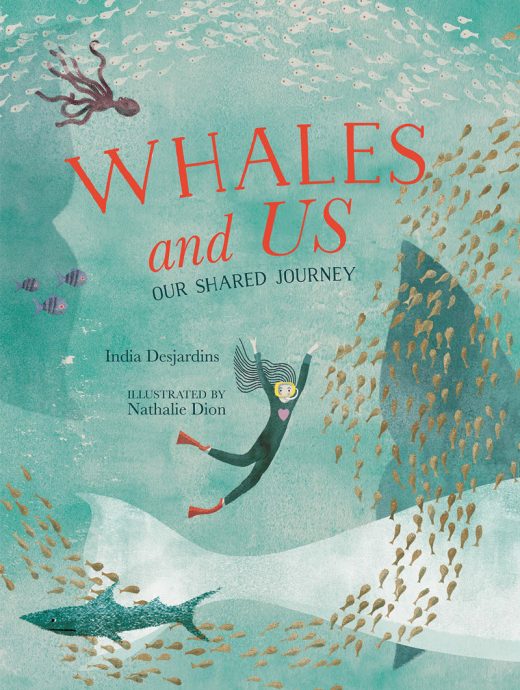 Whales and Us: Our Shared Journey
Whales and Us: Our Shared Journey
Text by India Desjardins
Illustrations by Nathalie Dion
56 pp. Orca Book Publishers
Whales and Us is a book that can be dipped into time and again. The first few spreads get at the basics of whales—toothed versus baleen whales, as well as basic biology and evolution, for example. From there, the reader can flip to what interests them in sections that are launched with questions such as “Why do some whales get stranded?” or “Is whale watching harmful to whales?” The illustrations are painterly and delicate, more reminiscent of a storybook and less of a nonfiction title, but they work beautifully and draw the reader in. And the author does use stories to get at the facts she wants to relay. For instance, a spread with a red-headed mermaid introduces the myth of a siren’s song, followed by information on whale communication. Although not dismissive of peoples’ experiences, one of the book’s strengths is that we are asked to see whale behavior through their lens, not a human one. For instance, the author writes: “We should not analyze [whale] language by trying to translate it and make it fit into the way humans see the world. Instead, we should try to understand their language based on how it fits into their own world.”
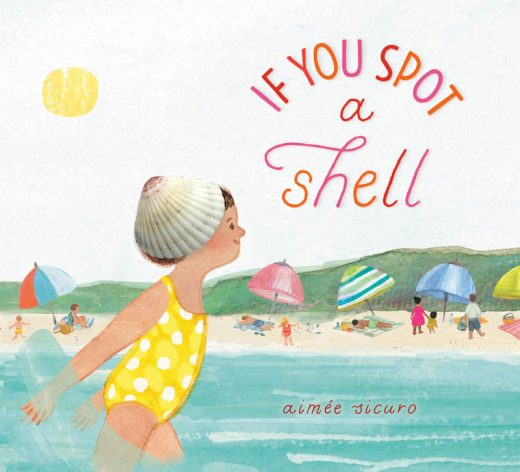 If You Spot a Shell
If You Spot a Shell
Text and illustrations by Aimée Sicuro
40 pp. Random House Studio
If you find a shell, what could it become? In If You Spot a Shell, young readers see the possibilities. On the beach one sunny day, a girl collects various shells and imagines them as everything from a bathing cap to a pirate’s patch to a floating raft. By changing the visual perspective and the shells used, the author-illustrator presents shells as a kite, a submarine, a rocket ship, and even a kaleidoscope. The book is rounded out with instructions for two art projects, and, of course, readers are encouraged to think of ways they might use shells: “If you spot a shell, you could imagine most anything.” For readers unable to get to a beach, the endpapers have photographs of 32 shells to spark imagination.
*The author reviewed the text of West Coast Wild Rainforest prior to publication for accuracy.

